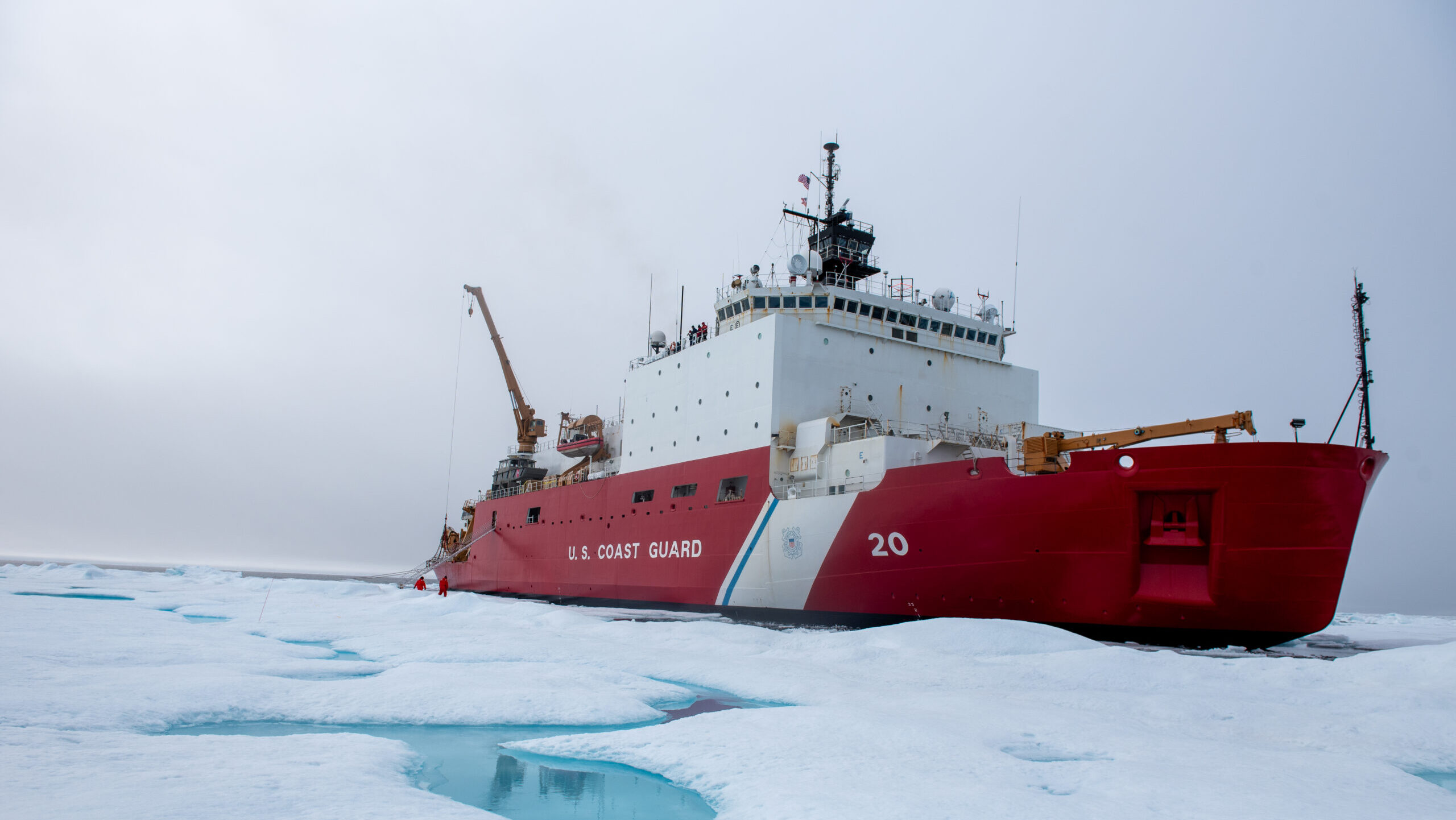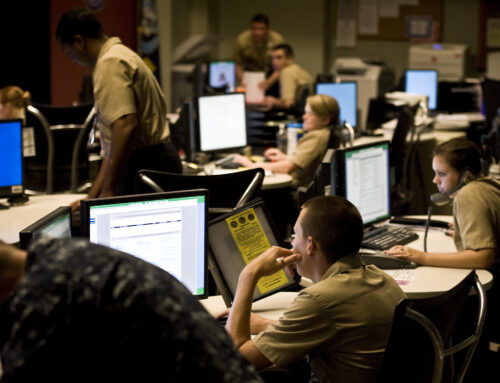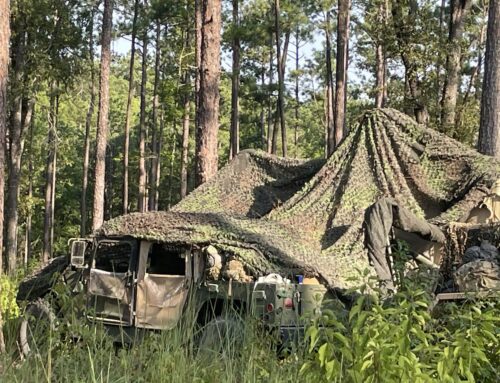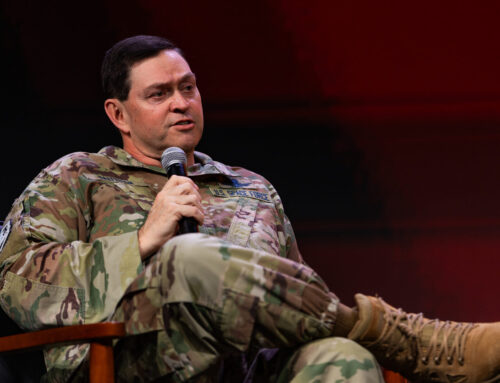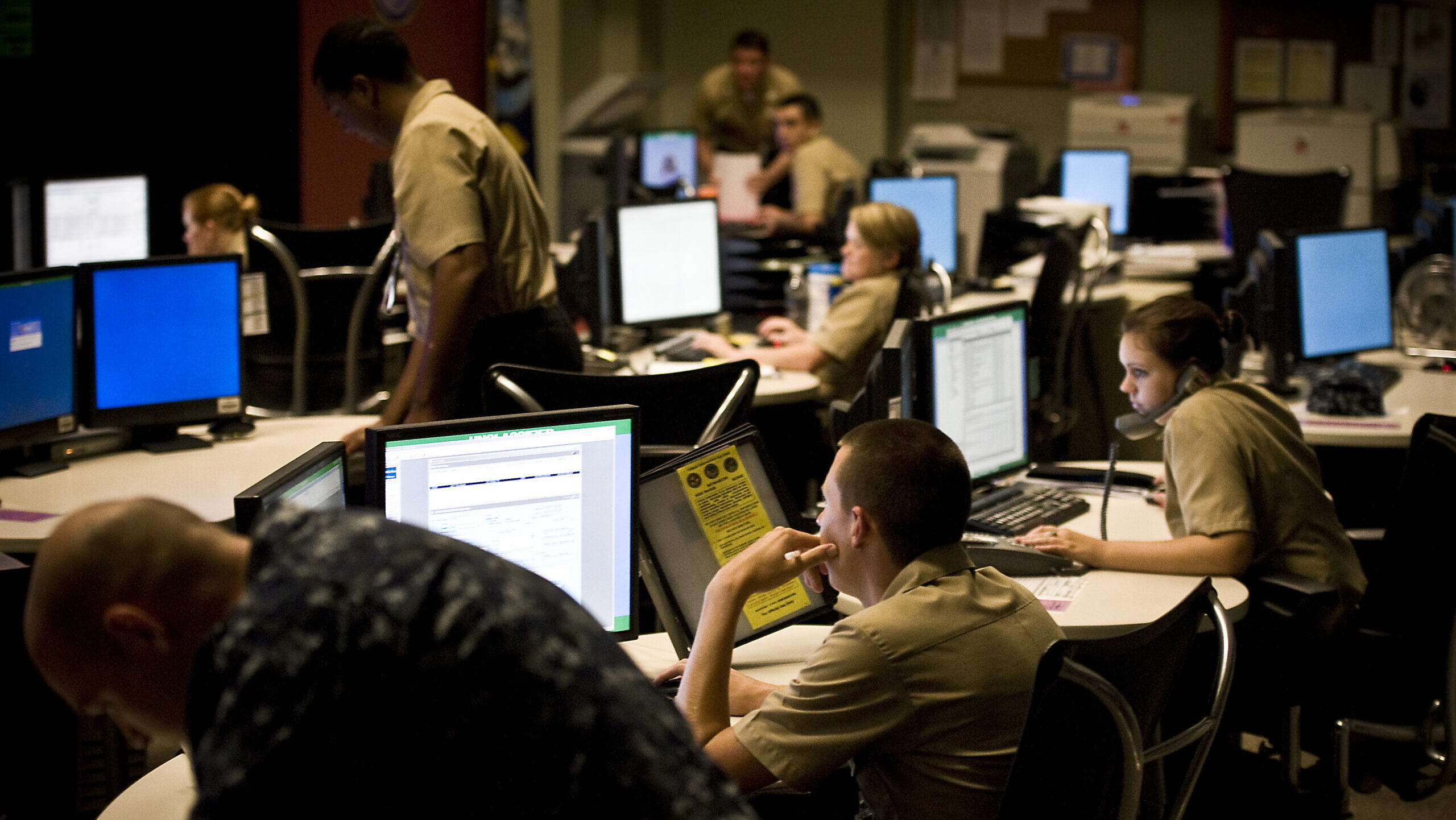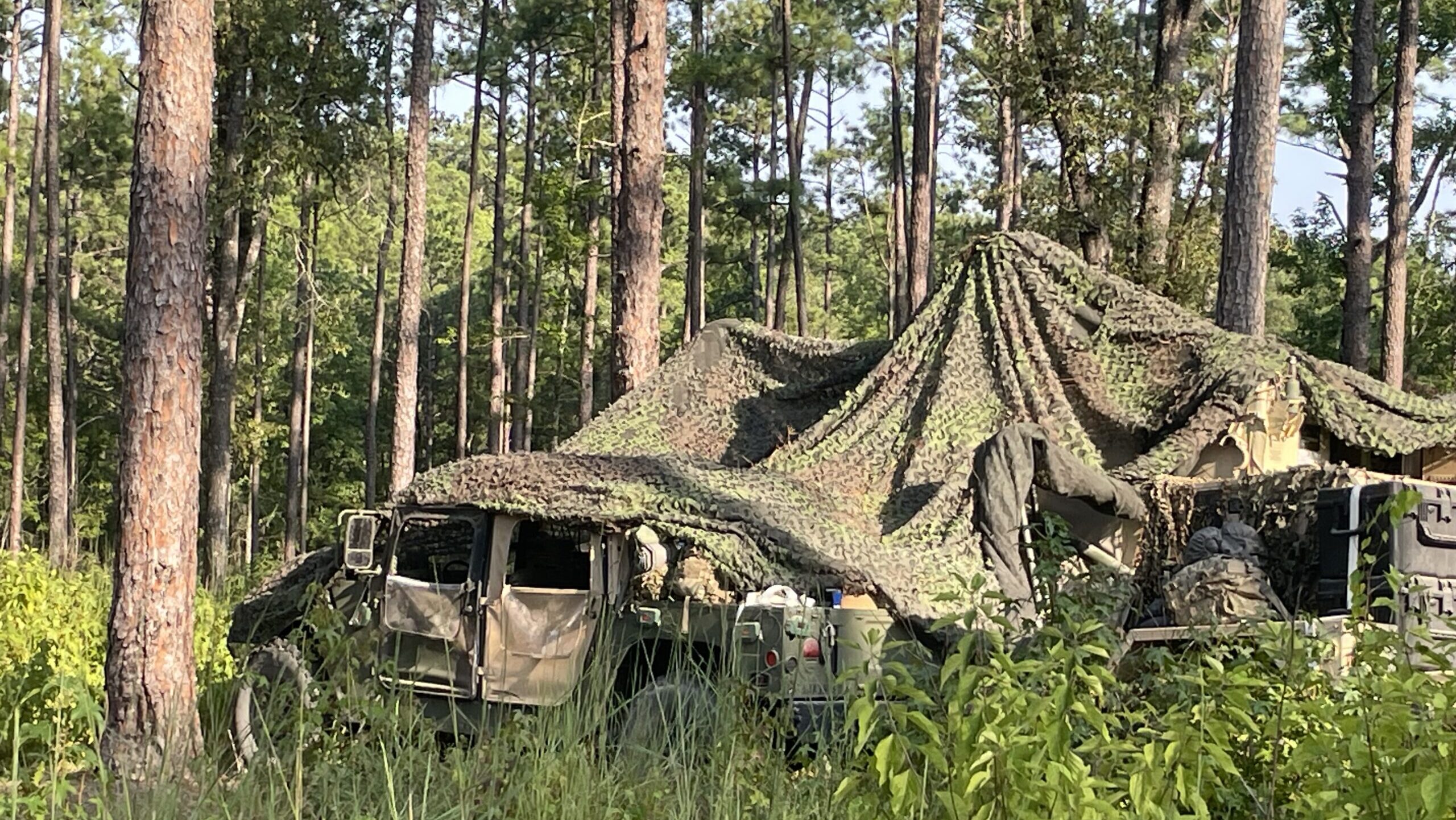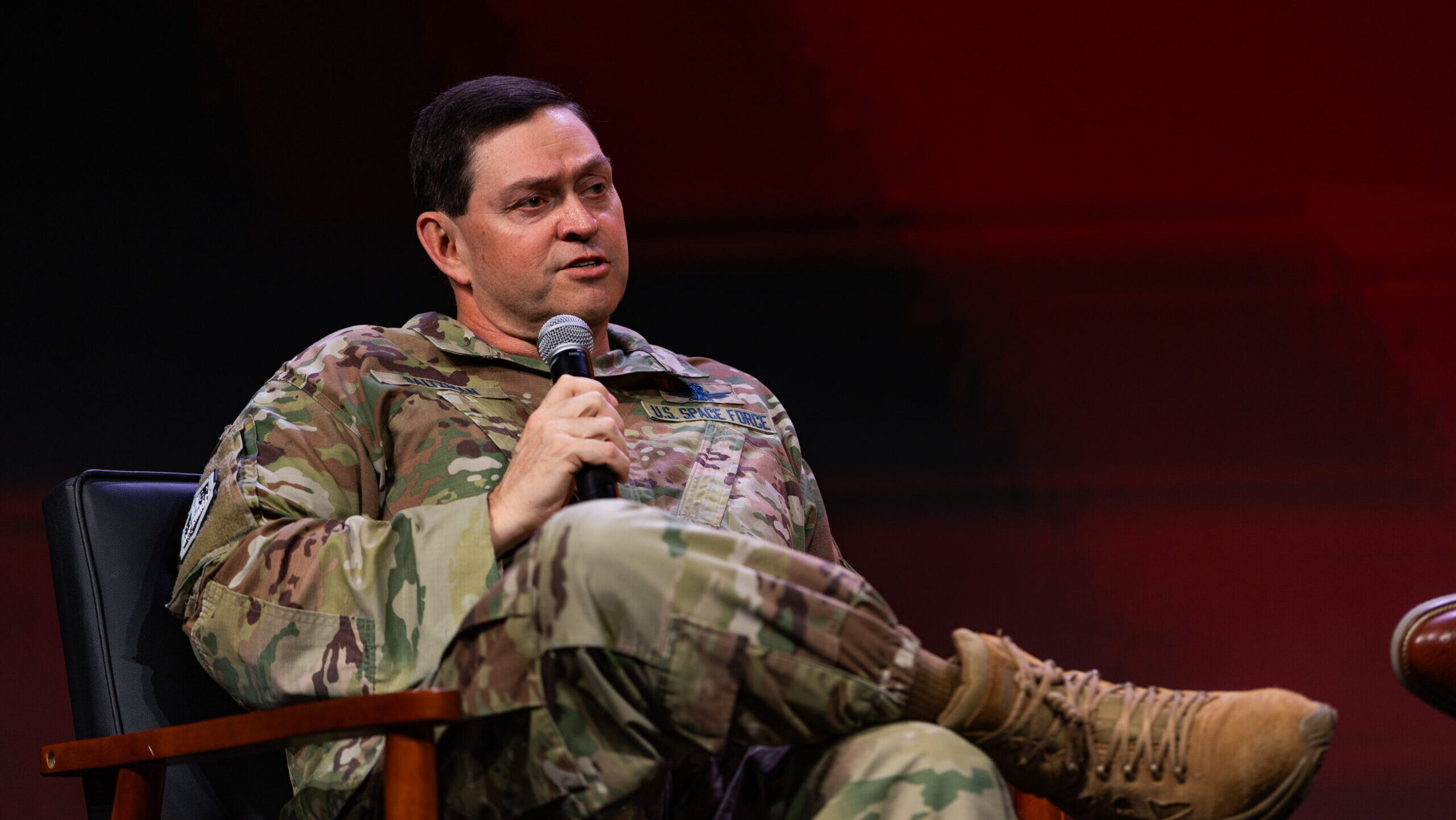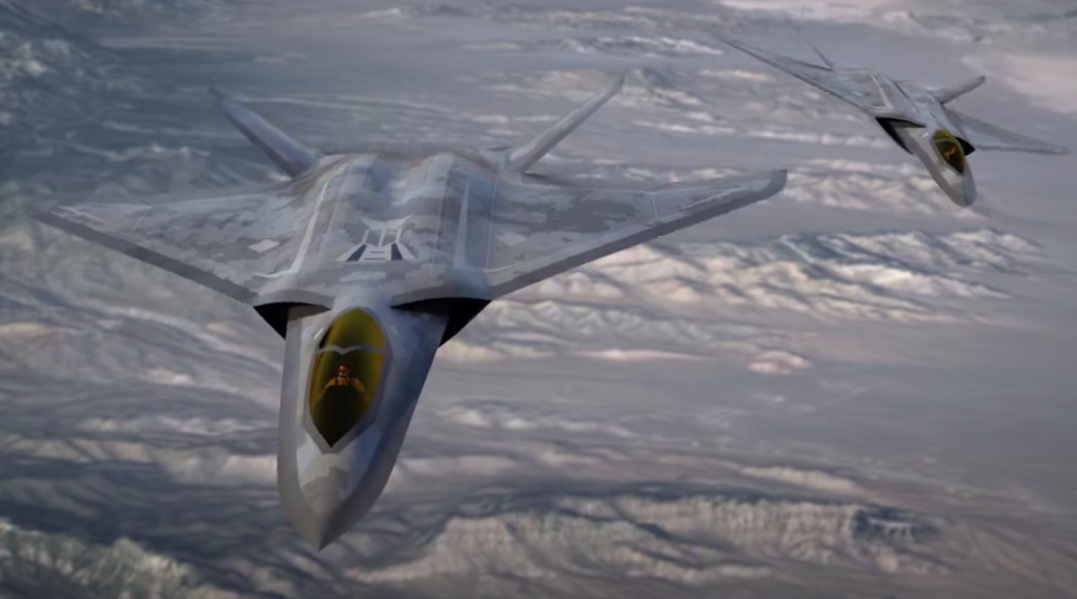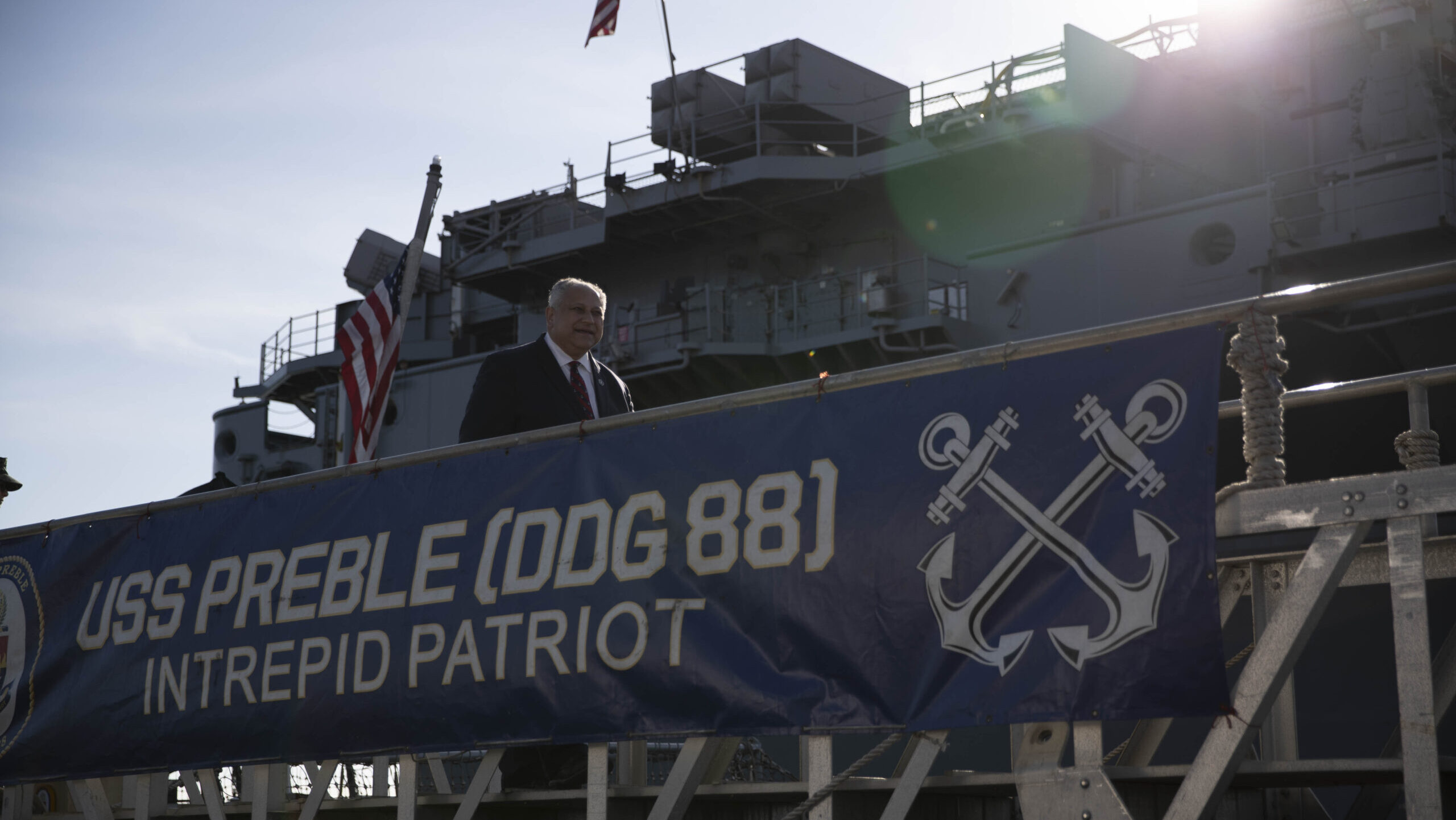The icebreaker USCGC Healy (WAGB 20) keeps station while conducting crane operations alongside a multi-year ice floe for a science evolution in the Beaufort Sea, Aug. 9, 2023. (U.S. Coast Guard photo by Petty Officer 3rd Class Briana Carter)
WASHINGTON — A bipartisan trio of senators are seeking information from the White House about the impacts the new trilateral security agreement ICE Pact will have on the American shipbuilding industry and what changes may be necessary from Congress to move it forward, according to a letter obtained by Breaking Defense.
The new letter, signed by Sen. Chris Murphy, D-Conn.; Sen. Patty Murray, D-Wash.; and Sen. Cindy Hyde-Smith, R-Miss., applauded the security agreement announced earlier this summer during the NATO Summit in Washington, DC. The need for cooperation on the construction of heavy icebreakers capable of freely navigating the High North is particularly urgent given increasing Russian and Chinese activities in the region, the senators wrote.
“In response to the changing physical environment and growing international pressure following its invasion of Ukraine, Russia has significantly built up its military footprint in the Arctic and re-opened several Soviet-era military bases,” according to the letter. “China, often in close coordination with Russia, has made critical investments to enable exploitation of natural resources above the Arctic Circle.”
The senators also cited the three dozen icebreaking ships in Russia’s fleet compared to the United States’ two operational icebreakers . Breaking Defense in August took an in-depth look at the new race for dominance in the north, finding that while the American defense industrial base is large, the specific skill sets and capabilities needed to produce heavy icebreakers have atrophied in recent history.
For at least part of the summer, the American icebreaker fleet — consisting of the Polar Star (WAGB-10) and the Healy (WAGB-20) — was completely unable to patrol the Arctic, with one ship tied up in maintenance while the other was being assessed for damage from a fire. The ability of the US and allies to continually be present in the Arctic, the senators wrote, is “critical.”
That kind of shortfall is in part why the Biden administration chose to partner with allies Canada and Finland, both of whom have significant experience in this niche sector of shipbuilding. When the leaders of the three nations announced ICE Pact during the NATO Summit, they promised further details would be released in a memorandum of understanding to be published later this year.
In their letter, the senators said they were interested in information that would inform Congress’ work in helping facilitate the pact’s execution. Their questions include:
How will the United States’ participation in the pact improve American shipbuilding efficiency through working with allies?
How will ICE Pact impact the Coast Guard’s major icebreaker construction program the Polar Security Cutter?
How does the pact align with NATO’s current icebreaker capabilities?
And what regulatory or statutory changes should Congress pursue to enable the administration to participate in the agreement?
“Year-round presence and situational awareness in these areas is critical to enforcing the rules-based order in the high-latitudes, protecting freedom of navigation, and ensuring that natural resource extraction abides by environmental rules and regulations,” the senators wrote. “A reliable icebreaker fleet operated by the U.S. and our allies is critical to achieving these strategic objectives, especially in the Arctic Circle.”
“By combining American industrial strength with the icebreaker design and shipbuilding experience of Finnish and Canadian partners, we see great potential in ICE Pact to bolster international collaboration in the Arctic and Antarctic broadly,” the letter continued.


